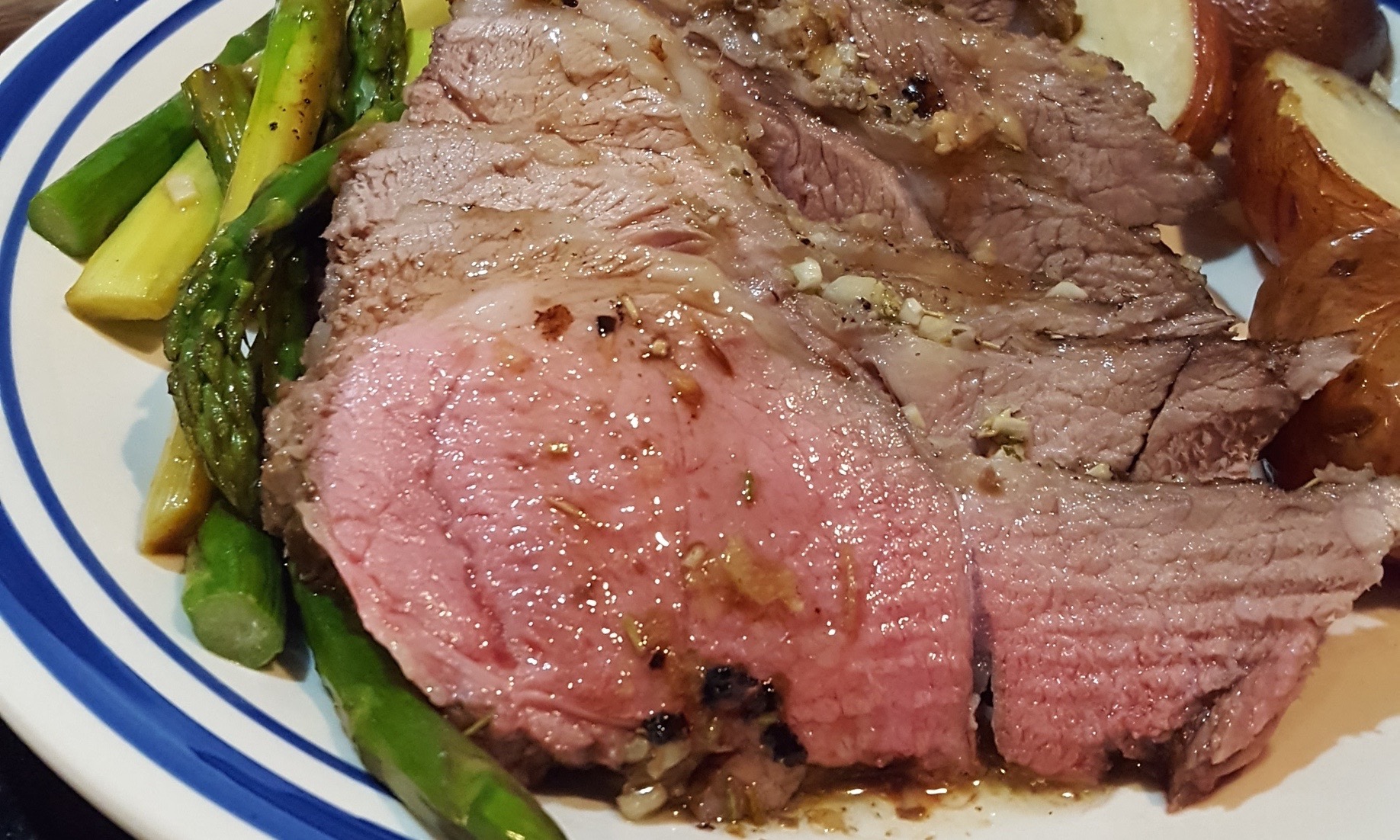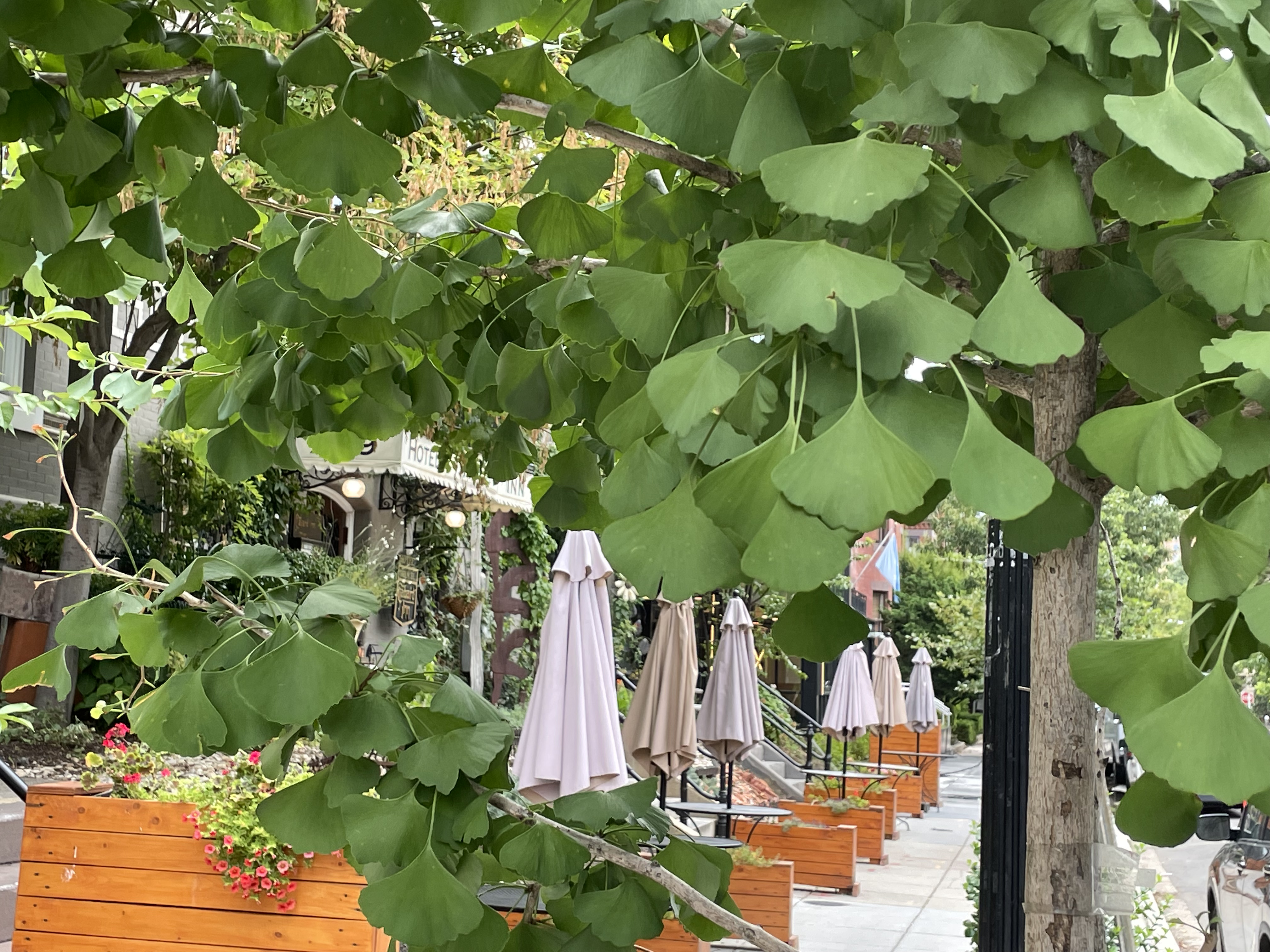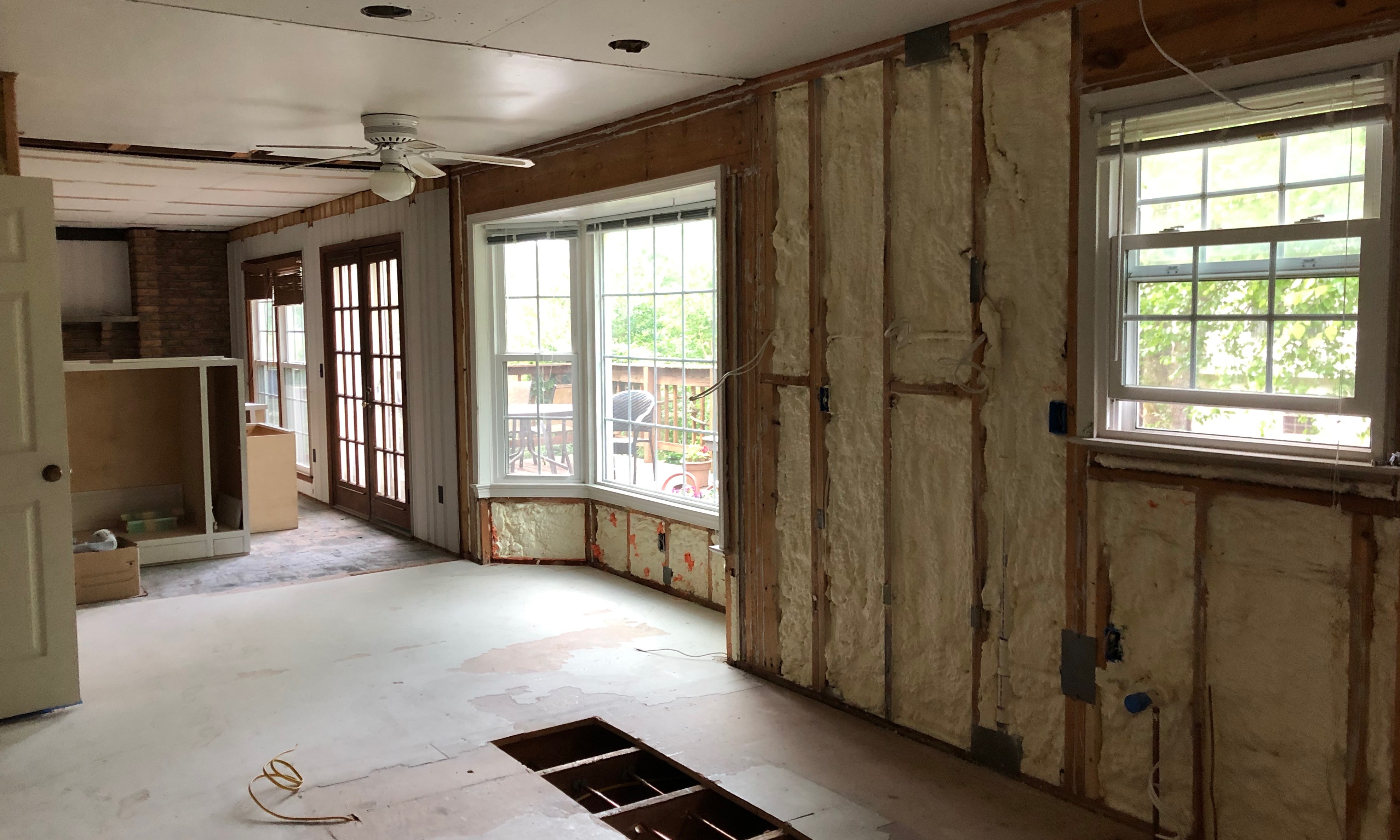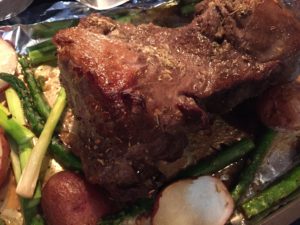
It was Easter and my daughter and I are the great lamb eaters in our family. So we got a leg just for the two of us. I roasted it and from the get go we–er, I–did everything wrong with it.
So here are my mistakes–a post with notes to remind myself what NOT to do again. My daughter insists that it was good. Just not medium-rare perfection, in my opinion.
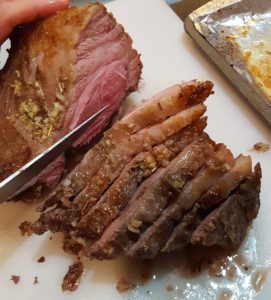 We got the smallest lamb for two of us and since I think the best deal for lamb–in terms of price and quality–is from Costco, we got a boneless leg from there. Happily, I settled for a a three-and-a-half pounder.
We got the smallest lamb for two of us and since I think the best deal for lamb–in terms of price and quality–is from Costco, we got a boneless leg from there. Happily, I settled for a a three-and-a-half pounder.
Long ago, in Sydney where we lived for four years, I should have mastered the art of roasting lamb. Alas, I only watched my sweet New Zealand friend Catherine Smith prepare her roast.
“It’s simple,” she said. As she poked holes around the leg with the point of a small knife, she added: “Just stab it in several places and stick in garlic and rosemary. And bake it at 170-180 degrees Celcius.” That would be about 325-350 degrees Fahrenheit.
That’s too easy, right? I should have just done it her way. But no, instead I tried a mishmash of a few recipes I gleaned online.
I marinated the lamb in lemon juice because I liked the way Feasty Geeks used only lemon, rosemary and garlic. They had a clean bone left as proof of how yummy it had been.
Be generous with lemon juice
Essentially, I followed their recipe but marinated the lamb in juice from only one lemon, instead of three. It wasn’t enough. Here’s part of my measly lemon juice. Which I did marinate for at least three hours. Lesson: Don’t be cheap on lemon juice.

Stay awake
Then I took a nap with grand baby with instruction to my daughter to take the lamb out of the refrigerator at 3.30 so I could roast it at 4 or 4.15pm. Lesson: don’t trust distracted moms.
Bring to room temp
When I woke up later than planned, I went downstairs to put the roast in the oven. No lamb on the counter. She had forgotten. I couldn’t wait because I didn’t want to eat late. So I roasted it cold. Not good. Lesson: Bring meat to room temp. (I should know better.)
Twine next time
Alison doesn’t have kitchen twine. Costco’s boneless lamb comes in a net. I didn’t want to waste my garlic, rosemary paste that I had diligently mashed up over fishnet stocking. Maybe I could cut certain portions of it and if I had three remaining bands maybe they would hold the lamb together. Oh so I thought.
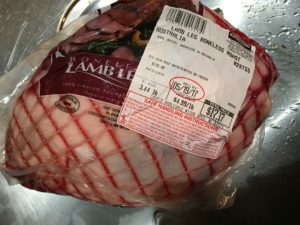
So I trimmed the elastic. Each time I did, the elastic sprung out and splattered the raw juices in my face. In the end the three bands did nothing to hold the boneless lamb together. I snipped them off and threw caution to the wind, i.e., the net into the trash.
It wasn’t the best move. Lesson: If you want a roast, then make it look like a roast–round and in one piece–tied properly with twine. Or buy a bone-in leg.

Through thick and thin
So there I had it. A lovely piece of butterflied lamb splayed open. One end was thicker than the other and the middle was a thinner layer. What was I thinking? They would not be cooked perfectly at the same time.
Oh, I know what I was thinking. That one side would be more rare (perfect for my daughter) and the other side less, for me. That nap must have dulled my brain.
I roasted the lamb for 10 minutes at 425 degrees Fahrenheit, and then reduced it to 325 for an hour and 15 minutes. When I checked the temperature the thickest chunk had already gone up to 137 degrees. Arrgh! Way past medium rare.
Also, the ends of the slab curled back towards each other. Now it looked like a dumbbell. Or two mini roasts! It would have been ideal–if I had not overcooked it. It looked fabulous. Well, not really, since it didn’t resemble a roast. Too much of it was medium.
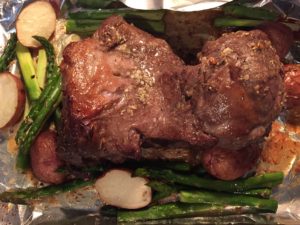
Later I looked up butterflying lamb and found Jamie Oliver’s How to Bone and Butterfly a Leg of Lamb most informative. He shows how to slice the thick parts of the meat open so that the whole leg ends up in even thickness. This butterflied lamb can be marinated with lemon juice, garlic, and rosemary, or be smothered with any exciting blend of herbs and spices, from Greek flavors, or Indian aromatics. Cooking it this way would be much faster also. Why didn’t I think of that?
My problem was being indecisive about what I wanted and ended up without real definition of how my meat should turn out. I should prep my meat one way or another. Lesson: If using boneless, butterfly it properly.
Watch heat and time
Note to self: Pay close attention to the temperature and time.
Roast at 325 degrees Fahrenheit. It’s supposed to be 30 minutes of roasting per pound so I calculated mine to be 1 hour 30 minutes, give another 15 minutes. I checked early and it still jumped too high.
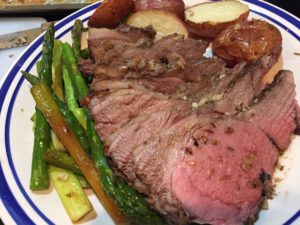 Too smart for my own good, I had wanted the meat seared so I also cooked it at 425 at the start. That messed up the heat process, especially since meat was left as a slab, and not tied.
Too smart for my own good, I had wanted the meat seared so I also cooked it at 425 at the start. That messed up the heat process, especially since meat was left as a slab, and not tied.
Next time I’ll stick with the Catherine Smith advice and keep it roasting at 325 degrees and see if it needs searing at the end. I can always just broil it for 2 minutes. Or not.
I’m suspicious of times recommended by many recipes. Some suggested longer times than what I did. I’m sure the roast would be over done. Lesson: Watch what’s going on in your stove AND to your chunk of meat.
Monitor temperature
Until I’ve done this over and over the way Catherine roasts lamb every Sunday, the best way to check that the meat does not overcook is to use a probe thermometer. If you don’t have one, err on caution, and check early. Better to put it back in oven to roast than to have it overcooked. Lesson: Watch temp. Use probe thermometer.
There I have it–great advice for myself for next time. Butterfly it properly, and watch your temp. I can’t wait to have another leg of lamb again.
